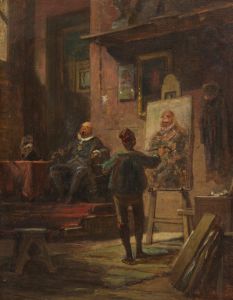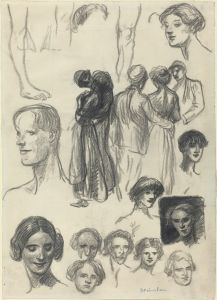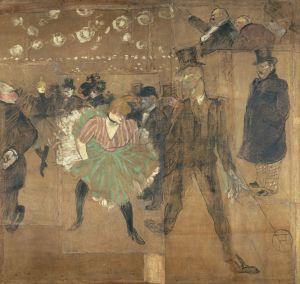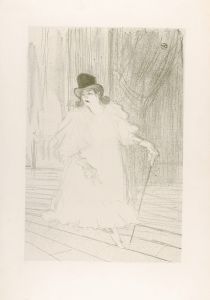
Rue des Moulins
A hand-painted replica of Henri de Toulouse-Lautrec’s masterpiece Rue des Moulins, meticulously crafted by professional artists to capture the true essence of the original. Each piece is created with museum-quality canvas and rare mineral pigments, carefully painted by experienced artists with delicate brushstrokes and rich, layered colors to perfectly recreate the texture of the original artwork. Unlike machine-printed reproductions, this hand-painted version brings the painting to life, infused with the artist’s emotions and skill in every stroke. Whether for personal collection or home decoration, it instantly elevates the artistic atmosphere of any space.
Henri de Toulouse-Lautrec's "Rue des Moulins" is a notable painting created in 1894, during the artist's mature period when he was deeply immersed in the vibrant nightlife and bohemian culture of Paris. Toulouse-Lautrec, a French painter, printmaker, draughtsman, and illustrator, is renowned for his depictions of the Parisian underworld, particularly the Montmartre district, which was the epicenter of the city's entertainment and artistic life in the late 19th century.
"Rue des Moulins" is one of several works by Toulouse-Lautrec that captures the intimate and candid moments of life in the maisons closes, or brothels, of Paris. The painting is part of a series that provides a glimpse into the daily lives of the women who worked in these establishments. Toulouse-Lautrec's approach was both empathetic and unvarnished, offering a perspective that was rare for the time, as he portrayed the women not as mere objects of desire but as individuals with their own stories and emotions.
The painting is characterized by Toulouse-Lautrec's distinctive style, which combines elements of Impressionism and Post-Impressionism. His use of bold lines, flat areas of color, and a keen eye for detail are evident in "Rue des Moulins." The composition typically features a group of women, often depicted in moments of rest or casual interaction, highlighting the mundane aspects of their lives rather than the sensationalized view commonly associated with such settings.
Toulouse-Lautrec's work is notable for its psychological depth and the way it captures the essence of his subjects. In "Rue des Moulins," he employs a palette that is both vibrant and subdued, using color to convey mood and atmosphere. The artist's technique of using thinned oil paint to create a sense of immediacy and spontaneity is also evident in this work.
The painting reflects Toulouse-Lautrec's fascination with the human condition and his ability to portray it with both sensitivity and honesty. His works from this period are considered groundbreaking for their candid portrayal of marginalized communities and their challenge to the social norms of the time.
Toulouse-Lautrec's personal life and experiences heavily influenced his art. Born into an aristocratic family, he suffered from health issues that left him physically disabled, which may have contributed to his empathy for those on the fringes of society. His frequent visits to the brothels were not only for artistic inspiration but also for companionship, as he found acceptance and camaraderie among the workers there.
Today, "Rue des Moulins" is appreciated not only for its artistic merit but also for its historical significance. It offers insight into the social dynamics of late 19th-century Paris and serves as a testament to Toulouse-Lautrec's unique perspective and contribution to the art world. His work continues to be celebrated for its innovative approach and its ability to capture the complexities of human life with both humor and pathos.


















